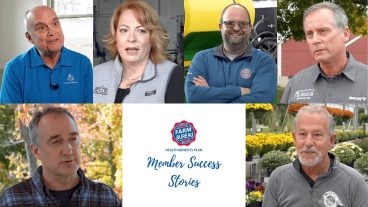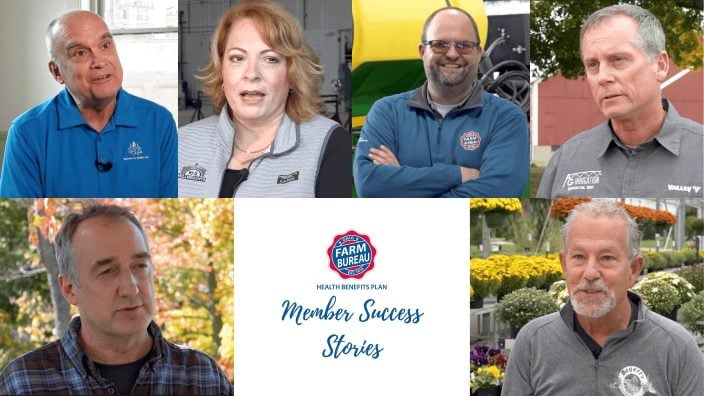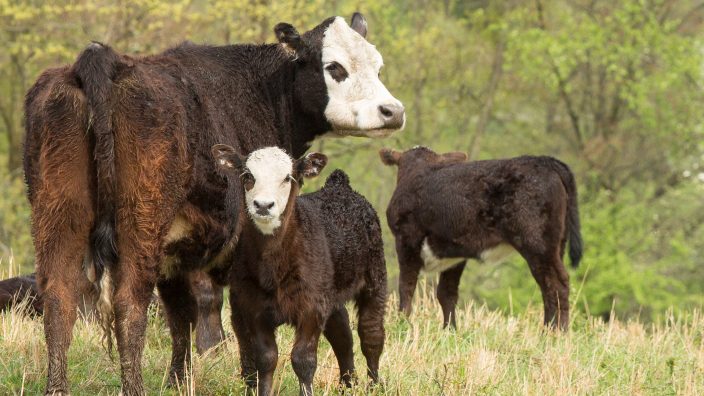Farmer’s Guide to Trucking Regulations available to Ohio Farm Bureau members
The guide includes a farm driver checklist, overview of state and federal regulations and exemptions, CDL qualifications and more.
Read More
The impact of an unusually wet spring last year is still being felt by Ohio’s livestock producers. Rains that kept many farmers from planting corn and soybeans in a timely manner, or in some cases not planting at all, also caused headaches for forage producers.
“We couldn’t get started with the first cutting of forages until July so we gave up a significant amount of annual tonnage right off the bat,” said Allen Gahler, an Ohio State Extension educator for ag and natural resources in Sandusky County. “Even though we had an abundance of first cutting, the calendar did not allow us to harvest as many times as we normally would.”
The delayed start to harvest also affected the quality of forages. The first cutting yields the highest tonnage but the lowest quality. Throughout the growing season, the crop gets better with each cutting. In 2019, about 75% of the total forage production came with the first cutting, putting the later, high quality product at a premium.
“That has presented a really big problem for dairies because what little bit of high quality hay that is out there is in high demand,” Gahler said. “Dairy farmers can’t compete with other hay dependent livestock sectors like horses to pay for that good quality hay, so they are struggling to find the right type of feed that will continue to maintain milk production.”
For beef, sheep and goat producers, Gahler urges a “test, don’t guess” philosophy when it comes to the 2019 forage crop.
“If you don’t test your forages you have no idea what you are feeding and look and feel can only tell us so much,” Gahler said. “Until we have a test to match the protein, energy and mineral needs of whatever livestock is being fed, we don’t know if we are giving them the right amount of nutrients.”
Gahler points to examples from last winter when a lack of testing forage content led to cows dying of starvation even though their stomachs were full.
Farmers are going to extensive measures to find forages worth feeding, with some having hay shipped in from Colorado, Nebraska and Kansas where center pivots are used during the growing season. Gahler and his colleagues at Ohio State Extension are meeting with producers to educate them on forage testing and how to economically find the right feed for their herds.
“The key is figuring out which nutrients are the most cost-effective to purchase, not just what is convenient and readily available,” Gahler said. “Maybe the answer is not just going to shelled corn or a different type of hay, but considering buying a different product than they are used to and having to find a new way of doing things in order to survive both nutritionally and economically.”


The guide includes a farm driver checklist, overview of state and federal regulations and exemptions, CDL qualifications and more.
Read More


ODA will enroll 500,000 acres into the program for a two-week sign-up period, beginning April 22, 2024, through May 6, 2024. Contact local SWCD offices to apply.
Read More

Katie Share of Columbus has been named ExploreAg and Youth Development Specialist for Ohio Farm Bureau.
Read More

Mary Klopfenstein of Delphos has been named Young Ag Professional and Ag Literacy Program Specialist for Ohio Farm Bureau.
Read More

The plan has been updated to give sole proprietors access to more rate stability and a smart solution that offers potential savings on health care.
Read More

The American Farm Bureau Federation, in partnership with Farm Credit, is seeking entrepreneurs to apply online by June 15 for the 2025 Farm Bureau Ag Innovation Challenge.
Read More

Adele Flynn of Wellington has been elected treasurer of the Ohio Farm Bureau Federation and now holds the third highest elected office in Ohio’s largest and most influential farm organization.
Read More

Producers are urged to work with their veterinarian to practice enhanced biosecurity measures and review and limit cattle movements within production systems.
Read More

The changing seasons bring with them the need to thoroughly inspect pole barns for any damages that may have occurred during the winter months.
Read More

Hundreds of Ohio businesses and sole proprietors are raving about Ohio Farm Bureau’s Health Benefits plan with lower, predictable costs and easy enrollment and administration options.
Read More